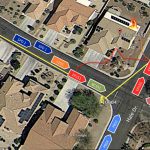How to Build NFPA 1401 Compliant Training Records
As a member of the fire service, you have so much more to think about other than NFPA 1401 compliance for your training records and reports. That’s why Emergency Reporting streamlines your data entry and reporting to make it easy to get the information you need, when you need it. Read on to learn more about NFPA 1401, why it’s important, and how to use a records management system to improve your training data and reports.
What is NFPA 1401 and Why Should You Care?
NFPA 1401 is the national standard for fire service training reports and records. NFPA 1401 outlines a systematic framework for providing essential information for managing the training function of the fire service organization and provides fire service personnel with definitions and guidelines for records and reports, as well as sample forms, designed to serve as fundamental tools for effective training administration. NFPA 1401 also provides best practices related to computerization of records and reports and the legal aspects of record keeping.
How to Update Your Training Documents to Meet NFPA 1401 Standards:
Training documents, regardless of their intent or level of sophistication, should focus on content, accuracy, and clarity. These documents should communicate at least five specific elements of information:
Who – Who was the instructor, who participated, who was in attendance, who is affected by the documents, who was included in the training (individuals, company, multi-company, or organization)?
What – What was the subject covered, what equipment was utilized, what operation was evaluated or affected, what was the stated objective, and was it met? In ER, the what is typically represented by “Training Code” (e.g. Vehicle safety/emergency vehicle operations).
When – When will the training take place, or when did the training take place?
Where – Where will the training take place, or where did the training take place?
Why – Why is the training necessary, or why did the training occur?
Additional information or details which should be included (but not limited to):
Source of the information used as a basis for the training – Textbooks title and edition, lesson plan title and edition, policy name and reference number, videotapes or DVDs, internet address, industry best practices, post-incident analysis (PIA), or other?
Method of training used for delivery – Lecture, demonstration, skills training, self-study, video presentation, mentoring, drills(s), or other?
Evaluation of training objectives – Written test, skills examination, or other?
How to Evaluate the Effectiveness of Training Records and Systems:
Training records should be evaluated at specified intervals by the local department training officer or training committee. Each record should be evaluated to determine the following:
- Has the individual received the required training? If not, has the individual been scheduled for or missed classes?
- Do performance deficiencies show up on the individual’s training record? If deficiencies exist, what kind of program is being developed to overcome them?
- Have companies met all required job performance standards established by the department?
According to NFPA 1401, most training records should be maintained in their entirety in a computerized form, thus greatly decreasing the amount of paper that needs to be stored. Computerized information systems like Emergency Reporting can provide an efficient method of processing comprehensive data and generating robust reports in a form that is conducive to day-to-day operations and decision-making processes.
Top Three Reports for NFPA 1401 Success:
There are many great reports that harness the power of Emergency Reporting’s Training Module. Here are three of the best:
1. Report 1503 – Classes Completed by Personnel
This report details classes completed per person and includes six parameters that enable users to fine-tune the report output. Tip: Clicking on the person’s underlined name (hyperlink) automatically re-runs the same report, but for just that individual.
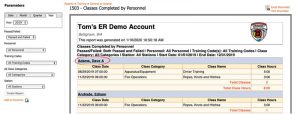

2. Report 1681 – Training Code Hours for Standard for Personnel for Date Range (Payroll Related)
This report takes advantage of our Standards setting by allowing you to run a report that shows how many hours of training per person per standard have been completed. This is excellent for documenting hours completed towards ISO standards, NFPA standards, state or local requirements.
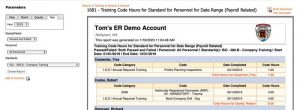
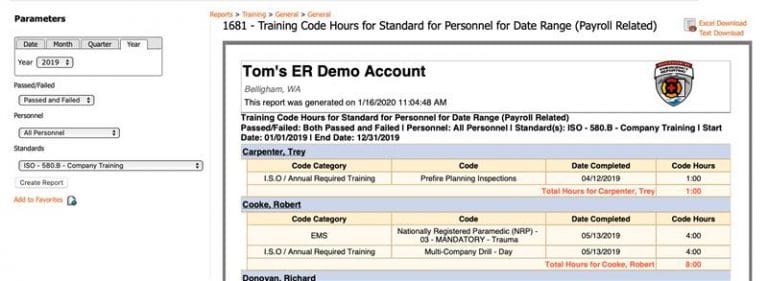
3. Report 1688 – JPR Template Completion Status for Template for JPR for Personnel for Date Range
This report does a fantastic job of answering the question from NFPA 1401, 6.1.2.(1): “Has the individual completed all the required training?” By taking advantage of the Training Module’s JPR feature, you’ll be able to quickly ascertain the completion status of required training for each person in the department with this report.

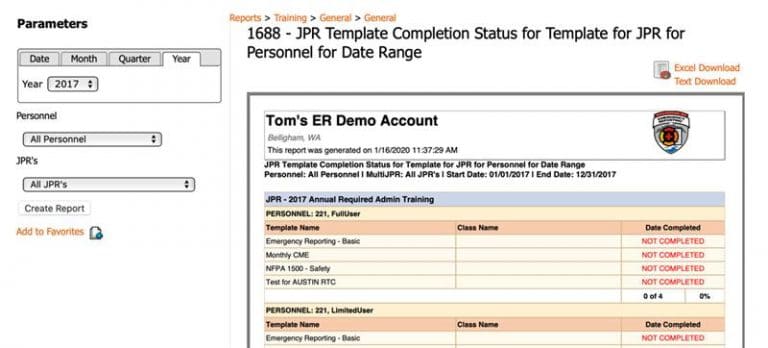
The ultimate goal of the training process is to improve the performance of the individual and the overall performance of the organization. The Training module and the many superb reports in ER can help you reach this goal. To learn how you can use ER to better document training that is user-friendly, highly comprehensive, easily reportable, and follows NFPA 1401, check out this webinar.
Sources:
https://www.youtube.com/watch?v=Z8drkW7xI3g
https://www.nfpa.org/assets/files/AboutTheCodes/1401/1401-F2005-ROP.pdf



